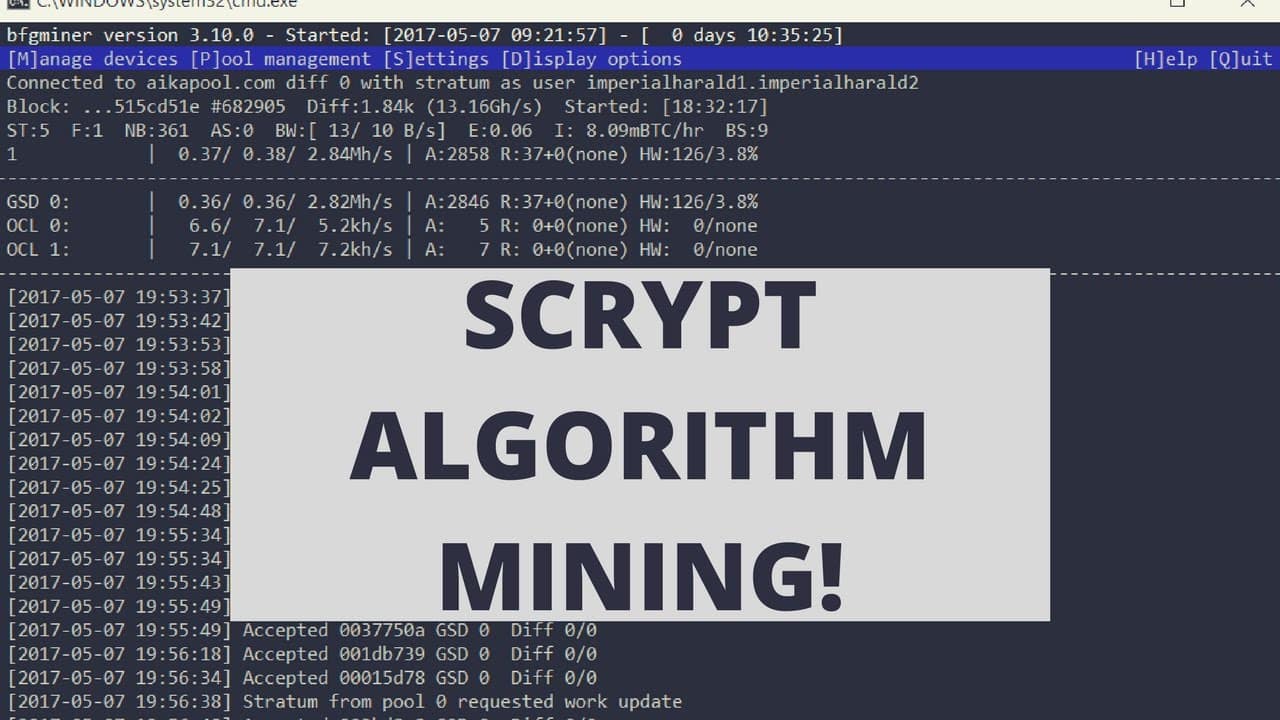What Makes the Scrypt Algorithm Unique for Mining?
You can’t talk about Dogecoin mining without mentioning the Scrypt Algorithm. The Scrypt Algorithm is a special, custom-built mining algorithm that facilitates the operation of cryptocurrencies like Dogecoin and Litecoin.
That means the Scrypt algorithm is peculiar to only some cryptocurrencies and, by implication, does not power all digital currencies. Other digital currencies have their specially powered algorithms by which they run.
For instance, Bitcoin runs on the SHA-256 (Secure hash algorithm 256-bit), Ethereum runs on the Ethash algorithm, Dash runs on the X111 algorithm, and so many others we’d see as we progress in this article. Both Litecoin and Dogecoin run on the Scrypt algorithm.
The Scrypt Algorithm – Key Features and How it Works
The Scrypt Algorithm is one of the newest trading technologies in the Crypto ecosystem. Although it was originally designed for Tarsnap, it later grew to become widely used for several cryptocurrencies like Dogecoin and Litecoin. The Script runs on a key derivation function (KDF) that secures passwords and supports blockchain transactions.
The Main Features of the Scrypt Algorithm
Large Memory Capacity
The Scrypt Algorithm is memory-intensive, which is why it takes up a whole lot of memory while in operation. Unlike other algorithms that take up less memory, the Scrypt Algorithm consumes a whole lot of space in the RAM.
Conventionally speaking, this property makes it resistant to ASIC mining, even though there have been some adjustments in recent times to accommodate ASIC miners.
Merged Mining Property
The Scrypt Algorithm offers an option for merged mining. That means miners can mine two coins on the same hardware, with the same hashpower, and earn 2 coins as rewards without spending an extra dime.
Dogecoin Miners can utilize this opportunity to mine Dogecoin and Litecoin simultaneously in the same hardware equipment and earn two coins apiece from both cryptocurrencies.
Pseudo-Random Function and Mixing
To derive keys used in the encryption of data, the Scrypt algorithm deploys large arrays and multiple passes over memory. This ability tightens its security architecture, thereby making it impossible for unauthorized access.
Slowing Down Brute Force Attack
Due to its large memory capacity, the Scrypt algorithm makes brute-force attacks very hard and expensive, thereby reducing their rate of occurrence.
How Does the Scrypt Algorithm Work?
The mining process by which the Scrypt algorithm is built happens to be highly memory-intensive and quite intricate, however, I’ll try as much as possible to simplify each process in the next few lines.
First of all, the process begins with a password, which serves as input data like a block header, and a randomly generated salt. A function called PBKDF2 with HMAC-SHA256 is then used to generate an initial pseudo-random block of data. This block is now fed into a new phase, widely known as ROMix. In this phase, the algorithm creates and fills a larger memory array with transformed versions of the original data.
On completing this stage, the process continues to the next, where the memory is read back in a pseudo-random order and continuously mixed up. At this point, it’s practically very difficult to optimize the whole process without using a significantly large amount of RAM.
After all of these processes have been carried out, the last and final of all these memory and CPU-intensive steps is captured in the Scrypt using PBKDF2 one more time to compress the output into the final derived key.
Other Cryptocurrency Mining Algorithms vs. Scrypt Algorithm
SHA-256 (Secure Hash Algorithm 256-bit)
As we saw earlier, this algorithm is likely the oldest and most popularly used algorithm. Notably used by Bitcoin, one of the first ever established digital coins.
Unlike the Scrypt algorithm, it is CPU-intensive, but not memory-intensive, as it uses less space on RAM. It is less resistant to ASIC mining.
Ethash
The Ethash algorithm was used in Ethereum until there was a Merge.
In comparison with the Scrypt algorithm, it has almost similar properties, such as being ASIC mining resistant, memory-intensive, and also incorporating ASIC miners later on.
X11
The X11 is a chain of 11 different hashing algorithms. When compared to the Scrypt algorithm, its design is almost similar, however, it is more secure and less energy-intensive than SHA-256.
Bcrypt
Just like the SHA-256 algorithm, the Bcrypt is one of the oldest known mining algorithms. Despite this, it is still commonly used for password hashing.
It is mainly slower than the Scrypt algorithm, and also designed to guard against brute attacks, but not memory-intensive.
Argon2
Argon2 functions almost like Scrypt, as it is memory-intensive. Just a few other functions differentiate it from Scrypt in design and function.


